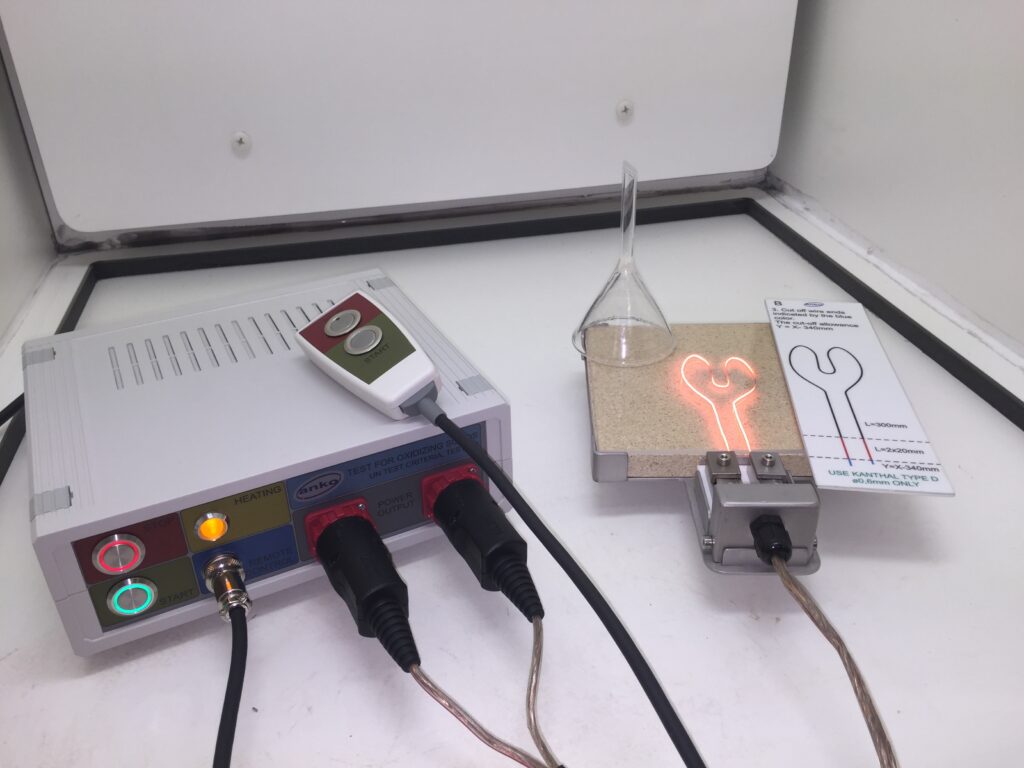
Our Solutions: Testing
Our laboratories generate test data on dangerous goods and materials for transport.
Transportation testing & classification
If your business transports potentially dangerous goods or materials, then you may be subject to regulations from a range of multiple international bodies. Failure to properly transport potentially hazardous goods and materials could result in fire or explosions in the vicinity of the public. Sigma-HSE’s labs offer comprehensive standard and custom testing packages to aid you in the classification and transportation of dangerous goods.
We offer a wide range of transportation & classification testing services. Discover our range of tests below and get in touch for
a free consultation today.
Recommendations on the Transport of Dangerous Goods, UN Manual of Test & Criteria – UN Test O.1
This test is primarily conducted for the purposes of transportation. Mixtures of a reference oxidizer (potassium bromate) / cellulose (fuel) and the mixtures of the substance and cellulose (fuel) that are to be tested are prepared in specified ratios. Using a conical funnel, the mixtures are formed into a truncated conical pile which is covered by a looped ignition wire that rests on a low heat conducting plate. Power is then applied to the ignition wire and is maintained for the duration of the test.
A recorded burning time is taken from when the power is switched on, to when the main reaction (e.g. flame, incandescence or glowing combustion) ends. This test is performed on the cellulose ratio five times. Each substance is also subject to five tests, with each reference mixture ratio required to make a packing group assignment to determine if the substance should not be classified in Division 5.1. The test method is identical to that detailed within CLP/GHS regulatory procedures and therefore, data gathered can be used for both applications.
Materials that are classified for transportation, such as oxidizing solids, are usually based on either guess work or comparative studies. These are often incorrect and large costs associated with classified oxidized materials can be avoided. If a product contains a known oxidizing constituent, it doesn’t simply mean the blend should also be classified.
Recommendations on the Transport of Dangerous Goods, UN Manual of Test & Criteria – UN Test N.1
The test is conducted to determine whether a solid material should be classified, for transportation as a flammable or readily combustible substance of UN Class 4, Division 4.1. The same test technique applies for classification under CLP as a Flammable Solid (H.228)
A powder strip is formed using a triangular cross sectioned mold, onto a heat resistant, non-porous plate. Using a butane flame, one end of the strip is ignited and the initially the time taken to burn over a marked 200 mm length is recorded.
If the time taken is equal to or less than 120 s then further trials are conducted over fresh powder strips and the burning rate over a length of 100 mm measured.
If the time taken is equal to or less than 45 s (2.2 mm.s-1) then the material is classified as a ‘Flammable or Combustible Solid, of UN Class 4, Division 4.1. During the 100 mm trials, a section of the material past the 100 mm mark is wetting and observations are made to whether the wetted zone, stops flame propagation for at least 4 minutes.
If the wetted zone fails to stop propagation the material is designated to packing group 2, if it succeeds, a packing group 3 designation is given. The test method is identical to that detailed within CLP/GHS regulatory procedures and therefore data gathered can be used for both applications.
Materials that are being classified for transport as a flammable solid, based on either guess work or comparative studies are often incorrect and the large costs associated with classified flammable materials can be avoided. Because a product, contains a known flammable constituent, doesn’t simply mean the blend should also be classified.
Recommendations on the Transport of Dangerous Goods, UN Manual of Test & Criteria – UN Test N.4
The test is conducted to determine whether a solid material should be classified, for transportation as a Self-Heating Solid of UN Class 4, Division 4.2. The same test technique applies for classification under CLP as a Self-Heating Solid (H.251 & H.252)
The sample, in its commercial form is filled to the brim of the test basket and the basket tapped several times. More material is added, if the material is seen to have settled. The basket is housed in the mesh cover and placed into the center of a preheated, hot air, circulating oven, set to the required test temperature.
The initial test is conducted using a 100 mm cube sample, at a temperature of 140 °C. The sample temperature and oven temperature are continually monitored, using inconel sheathed thermocouples over a test period of 24 h (unless ignition is detected earlier). If ignition is not observed, then the material is not classified as a self-heating solid. If ignition is observed, then the material is classified, and further testing is required to designate the correct packing group and/or classification exemption conditions.
All though a material maybe self-heating, if transported within specified volume restrictions, exceptions can be made and therefore huge costs avoided. These exemptions can only be determined through testing.
Can’t find the tests you need?
From reaction calorimetry testing to oxidizing solids – UN Test O.1, Sigma-HSE is your single solution provider for transportation classification testing. Our dedicated team of experts are committed to helping you ensure and maintain compliance.
Receive quick and accurate data in just a few simple steps
Get in touch with one of our experts so we can learn more about your specific requirements. We’ll then generate and send you a customized quote.
Prepare your samples and ship them to one of our global laboratories.
Once we’ve received your samples, we’ll begin testing and analyzing. We’ll then create and send you a custom in-depth report with actionable insights.
If you need support after receiving your report, our after-sales support team will be on hand to assist you with any questions you may have.
Testing and classifying materials for transportation is an important
aspect of safety compliance. Learn more about how we can assist you today.

Are you visiting Sigma-HSE from outside your region? Visit your regional site for more relevant process safety solutions.